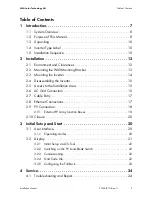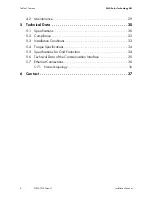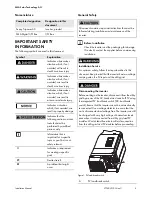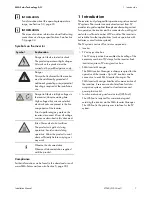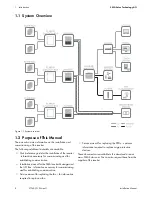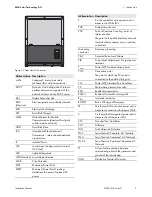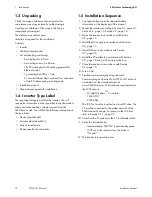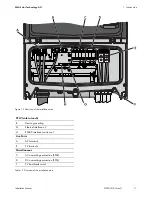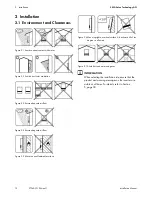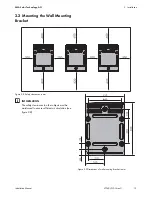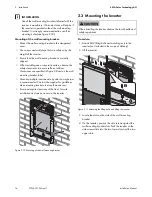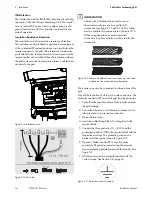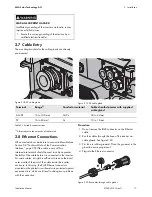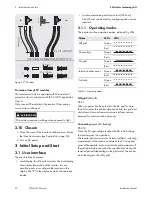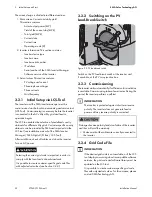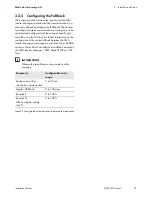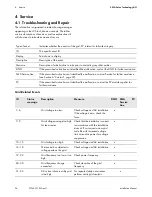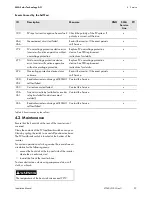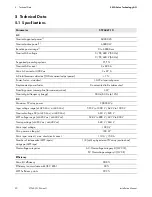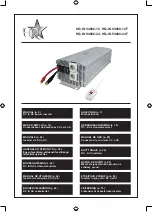
2 Installation
SMA Solar Technology AG
16
STP60-JP-10-IA-en-11
Installation Manual
IMI Detection
The inverter has a built-in IMI/RCMU (Insulation Monitoring
Interrupter / Residual Current Monitoring Unit). The inverter
acts on residual DC current and a sudden change in the
ground fault current. This functionality is activated during
normal operation.
Insulation Resistance Detection
The inverter has a built-in insulation resistance detection.
The insulation resistance detector performs a measurement
of the connected PV system resistance to ground before the
inverter connects to the grid. If the resistance is below the
grid code set value, the inverter will wait and re-measure the
resistance after a short while. When the resistance is above
the grid code set value, the inverter performs a self-test and
connects to the grid.
Figure 2.14 Installation area
Figure 2.15 AC cable
Figure 2.16 Cables with different conductors (from top to bottom):
multi-strand, fine-strand and extra fine-strand
The inverter may only be connected to a three-phase utility
grid.
Strip off the insulation of all four AC cable conductors. The
protective conductor (PE) must be longer than the grid wires.
1. Verify that the nominal voltage of the inverter matches
the grid voltage.
2. Ensure that the main circuit breaker is released, and
take precautions to prevent reconnection.
3. Open the front cover.
4. Insert the cable through the AC cable gland to the
terminal block.
5. Connect the three grid wires (L1, L2, L3) and the
grounding conductor (PE) to the terminal block with the
respective markings. The grounding conductor is
marked with the symbol shown in figure 2.17.
6. Optional: Make an extra PE connection at the
secondary PE grounding points using the external
device grounding bolt delivered with the inverter. See
figure 5.2.
7. All conductors must be correctly attached with the
correct torque. See Section 5.4, page 34.
Figure 2.17 Protective conductor symbol
INFORMATION
Cables with multi-strand, fine-strand or extra
fine-strand conductors can be used for AC
connection (see figure 2.15 and 2.16). The cables
must be suitable for a temperature of at least 75°C.
When using fine-strand or extra fine-strand
conductors, bootlace ferrules must be used for the
connection.


